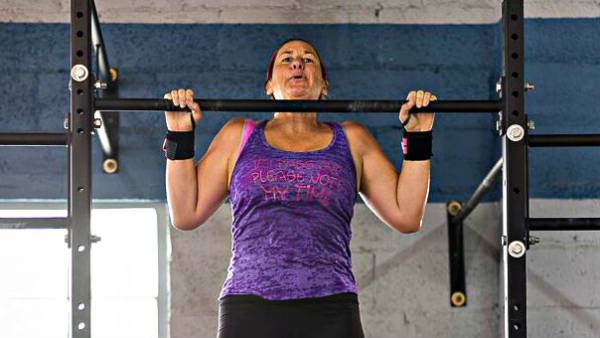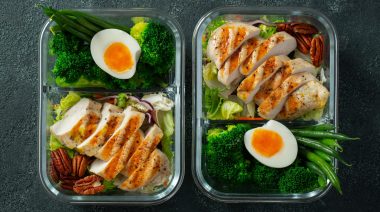“Don’t get too bulky.” “If your shoulders get too big, you’ll look like a man!” “You’re too skinny, you need to eat!” “There’s no way she’s natural, she is definitely using steroids.”
If you’re a female athlete, you’ve probably heard one or all of these things before. Between comments from well-meaning relatives who don’t understand your passion for fitness and Internet trolls who have probably never been inside a gym, these comments can be infuriating and exhausting.
Quite frankly, I don’t think it is anyone’s business what type of body another person has or desires. The fitness community has an incredible opportunity to share knowledge through social media, but for some reason, instead of building each other up, the majority of people are judging and critiquing others. How about we cut out the negativity and start working together to revolutionize the fitness world?
Here is the framework for ladies (or fellas, all are welcome here!) who are interested in building muscle mass.
Exercises like the overhead press, squat, and deadlift are classic strength-builders for a reason. They work.
1. Fuel Your Body
The timing of your meals is as important to your muscle growth as the actual work you put in at the gym. It is commonly believed that the window of opportunity to replenish your nutrients is within 30 minutes of a workout. If you train more than 3-4 hours after your last meal, it is beneficial to consume protein (20-40g) as soon as you are finished to repair the breakdown of muscle and initiate growth and recovery. This can be in the form of a protein shake, meat, eggs, yogurt, or other protein sources. It should be noted that this small window of refueling is unnecessary if you have consumed a protein-rich meal within 3 hours of training.
2. Eat Balanced Meals
Start each meal with protein, which is the foundation for growing strong, lean muscle. Aim for about 1g of protein per pound of bodyweight. Add carbohydrates to give you energy, especially on heavy training days. Over time, if you notice an increase in body fat, lower your carbohydrate intake on rest days and consume most of your carbohydrates prior to exercise. Supplement your meals with healthy fats for satiety, such as coconut oil, avocado, and nuts.
3. Supplement as Needed
Supplements can improve performance and increase mass when used in addition to a well-rounded diet. Here are a few of my favorites:
- Protein powder is a convenient post-workout option.
- Fish oil is popular for its positive effects on heart health and bone density, and has been linked to increased muscle mass.
- Branched chain amino acids (BCAAs) have been proven to significantly reduce muscle soreness and accelerate recovery time in athletes performing resistance training exercise, therefore allowing you to return to the gym more quickly after an intense day of training.
4. Get Comfortable With the Uncomfortable
You won’t see progress if you successfully complete every set with the same weight week after week. Step outside of your comfort zone and aim to do one more rep or use a slightly higher weight than you did last week.
5. Increase Weight and Decrease Reps
If you are used to performing larger sets of 12-15 reps, decrease to smaller sets of 6-8 reps at a higher weight. Higher reps increase muscle endurance, while smaller reps increase muscle growth and strength. If you can comfortably do 10+ reps, go up in weight for your next set. If you are struggling to get 5 or 6 reps, decrease the weight slightly.
The same rule applies to bodyweight training. If can do 15+ reps of a bodyweight exercise, try making the exercise more challenging so you are only able to do 8-10 reps. For example, if you can do 15+ push ups in a row, try decline push ups with your feet on a bench, or work your way up to a handstand push up with your feet against a wall.
6. Do These Essential Strength Exercises
7. Do These Bodyweight Exercises
- Bodyweight squat. Variations: single leg squat (pistol) to a box, assisted pistol squat, and single leg pistol squat. Advanced option: single leg pistol squat with weight.
- Push up. Variations: Incline push up/on knees, standard push up, close-grip/diamond push up, dive-bomber push up/decline with feet on bench, handstand push up with ab mat under head, handstand push up, deficit handstand push up (hands on plates). Advanced option: freestanding deficit handstand push up away from wall.
- Pull ups and dips. Variations: pull up and dips with resistance band for assistance, bodyweight pull up and dips, pull ups and dips with weighted vest or belt. Advanced option: strict muscle up or weighted muscle up.

Building strength doesn’t have to be complicated. Enter the humble pull up.
8. Avoid Overtraining
It is commonly believed that the time spent pumping iron is when we build muscle. The truth is, during training your muscles are actually being broken down. Your muscles grow and recuperate after training when you are at rest. If your workout takes several hours to complete, try increasing the intensity instead of the volume and limit your workout to 1-1.5 hours.
9. Do Good Cardio
A little cardio goes a long way. If your goal is increased mass and not long-distance running, there is no need for an hour-long cardio session after weight training. Think of marathon runners. While their endurance capabilities are unparalleled, they do not have a large amount of muscle mass. Cardiovascular exercise is important and certainly has its place, but overtraining will cause muscle to continue to break down, rather than repair and grow. Quality cardio for increasing size, strength, and power are things like sprints, sled pushes and pulls, and weighted carries.
10. Get Good Sleep
If you are serious about making gains and you are putting in the work at the gym and in the kitchen, don’t throw it all away by staying up late to binge watch Making a Murderer. I know I’m a buzz kill, but I promise it’ll still be there on your rest day.
I perform best on 8-9 hours of sleep per night, but everyone’s different. Figure out what works best for you, turn off the TV, log out of Facebook, and get a full night’s sleep.
Takeaways
Let’s break this down into a few key points to remember:
- Eat balanced meals with adequate protein, and supplement with carbohydrates and fats. Consume 20-40g of protein within 30 minutes of completing a workout.
- Eat what you believe to be large amounts of food, and then eat some more. Logging your meals in a journal or fitness app such as MyFitnessPal can help track food consumption.
- Lift heavy weights and increase the difficulty of movements instead of increasing volume.
- Limit cardio to short bursts of high-intensity movement instead of low-intensity steady-state activities.
- Take adequate rest periods to ensure muscle growth and recovery.
- Make sleep a priority.
Building muscle mass does not happen overnight, and it may take years of hard work and dedication to achieve your goals. The path to success may be long and arduous, but when you look back at your progress, it will be worth it. Set small goals and remember to celebrate even the smallest of victories.
Please feel free to comment below with any questions or additional suggestions. I will do my best to answer them as thoroughly as I can. Let’s build up the fitness community by sharing information instead of tearing each other down.
More Muscle Building Advice:
- Nutrition Advice to Turn You Into a Strength Training Animal
- Make Gains Like a Beginner: Novelty and Hypertrophy
- Functional Mass Gain: How to Build Real Horsepower
- New on Pulse Beat Fit Right Now
Photos courtesy of CrossFit Impulse.






